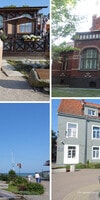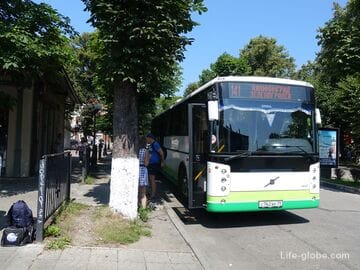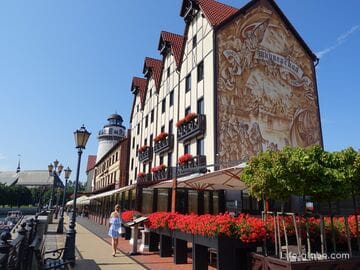Zelenogradsk is a small resort town located on the Baltic Sea coast, in the Kaliningrad region.
In addition to the long promenade and sandy beaches in Zelenogradsk, there are also some interesting sights, including: historical, architectural, modern and natural.
Zelenogradsk - Sights
Beach and Promenade
The beach and the promenade are perhaps the main and most visited places in Zelenogradsk.
The beaches of Zelenogradsk stretch in almost a single strip along the entire coast of the city, representing an extended sandy beach area.
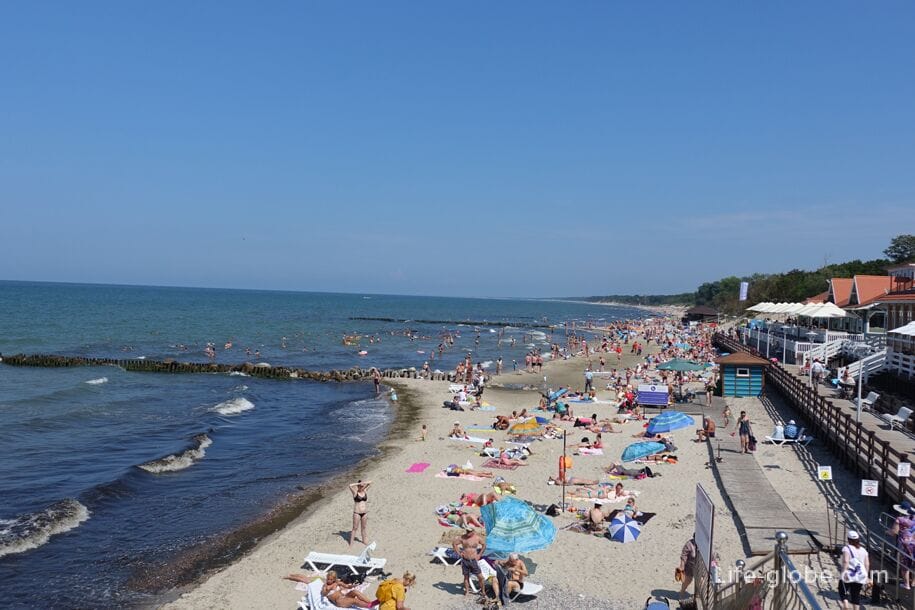
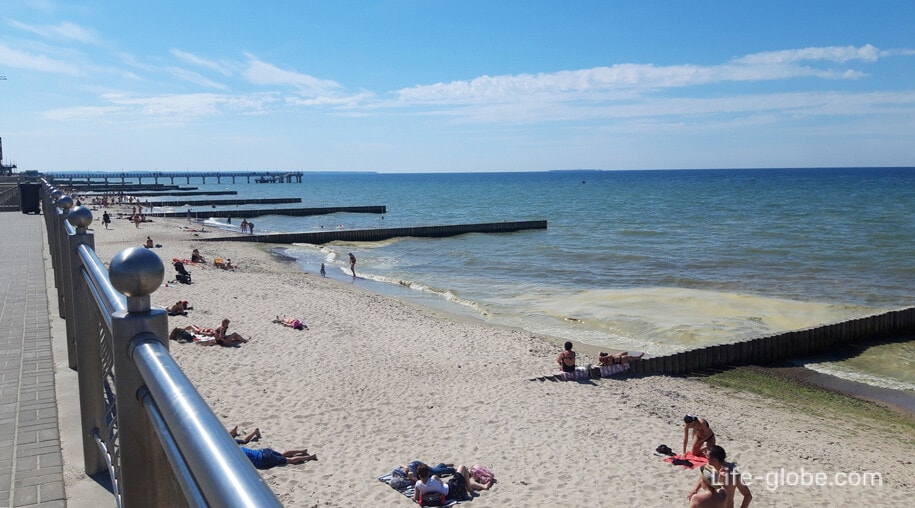
Along the beaches runs the Zelenograd promenade (Zelenogradsk embankment).
On the promenade there are places for recreation, children's and sports grounds, cafes, a 50-meter Ferris wheel "Eye of the Baltic", a swing, a bike path and various sculptures, for example, the sculptural composition "Mermaids", the sculpture "Cat on the embankment", and the most famous sculpture of the Zelenograd promenade - "Gray Baltic Seal" installed in 2013.
A public pier goes from the embankment into the sea waters. Learn more about the beaches, the promenade and the Ferris wheel in Zelenogradsk...
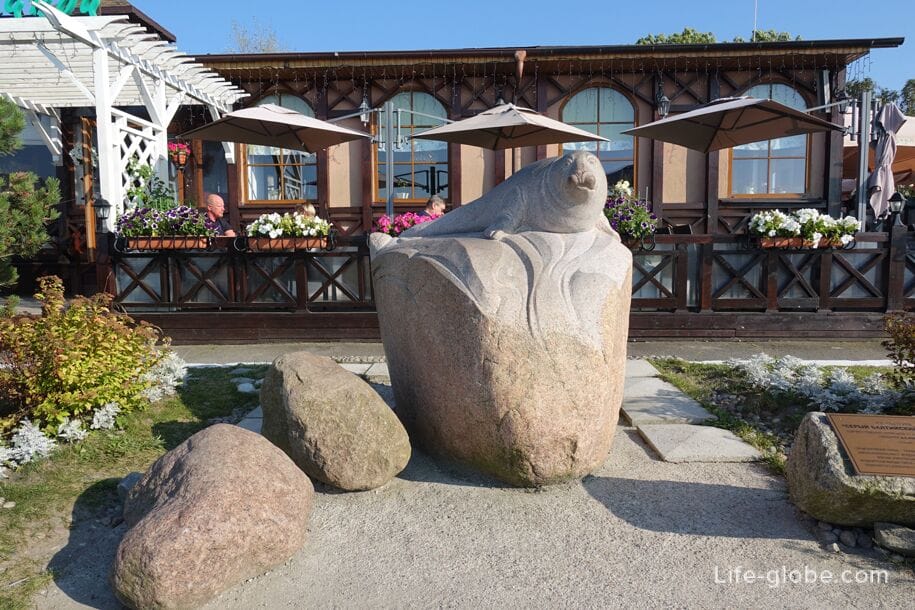
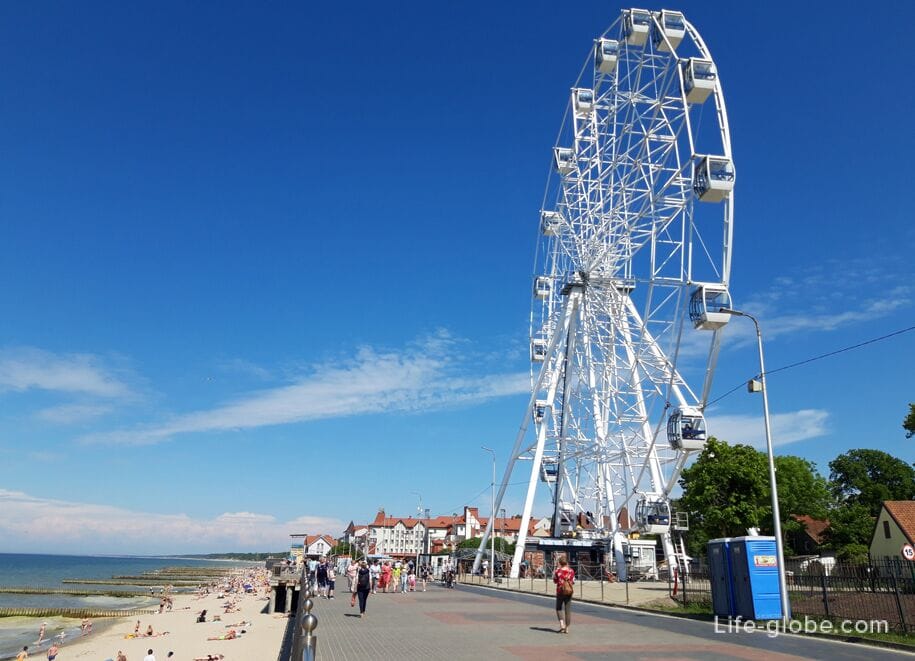
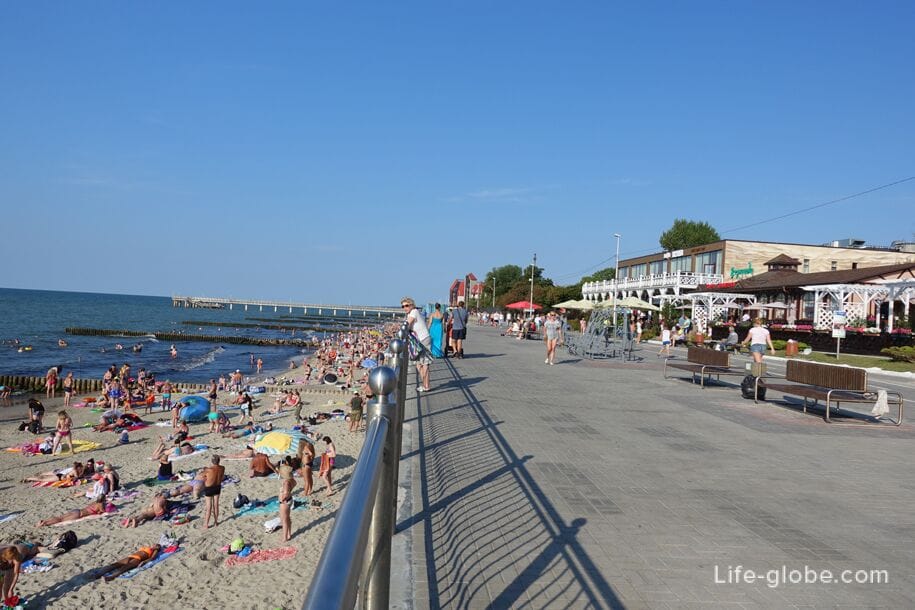
Pump room "Queen Louise"
Pump room "Queen Louise" - pump room with artesian mineral water. Mineral water is extracted from a depth of 240 meters from a reservoir formed 160 million years ago.
The pump room is named after the Queen of Prussia - Louise, who visited Kranz (now the city of Zelenogradsk) in January 1807, following from Konigsberg to Memel (now Klaipeda, Lithuania).
The pump room is public, the water is free. The pump room is located on the promenade, in its very center.
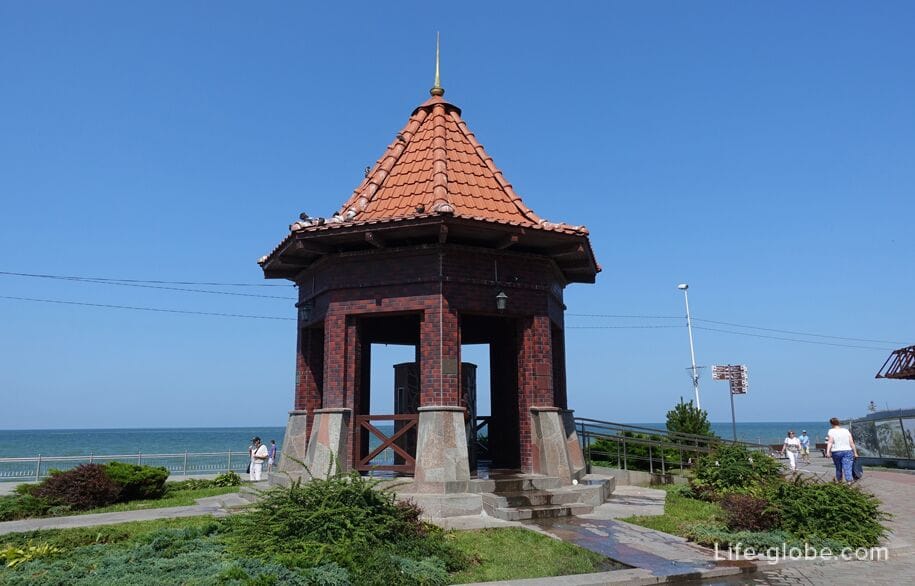
Krantz Administration Building
Near the pump room there is a building of the former administration of Krantz - burgomistrat.
The building was erected in the early 20th century in the Art Nouveau style and is now a unique object of cultural heritage.
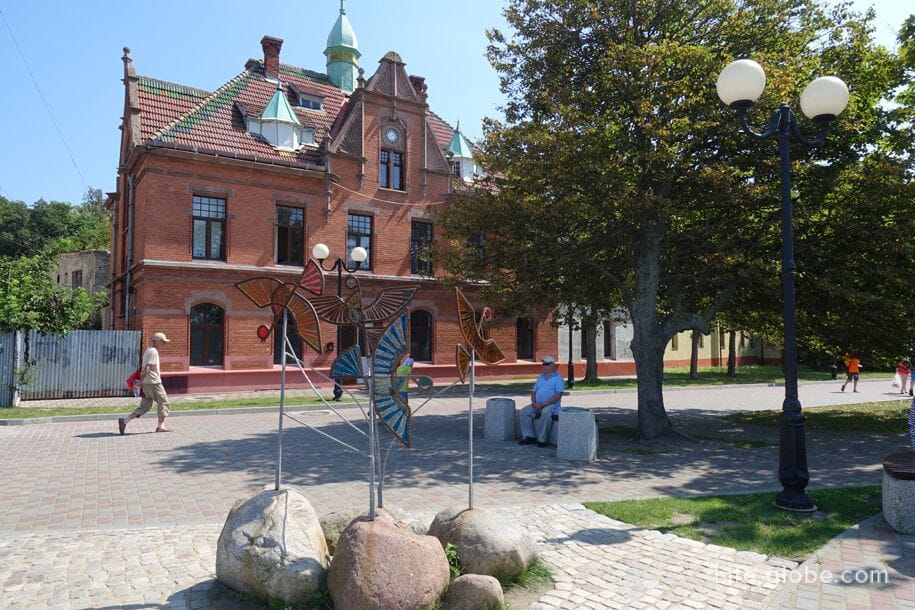
Krantz Post Office
The post office is a solid red-brick telegraph building, built in the early 20th century in the Neo-Gothic style. Since then, the appearance of the post office has not changed much, only in the center there was once an East Prussian coat of arms - a black eagle. The building housed: the post office itself, the telegraph office and the postmaster's office apartment. Currently, the North-West Telecom is located in the post office building.
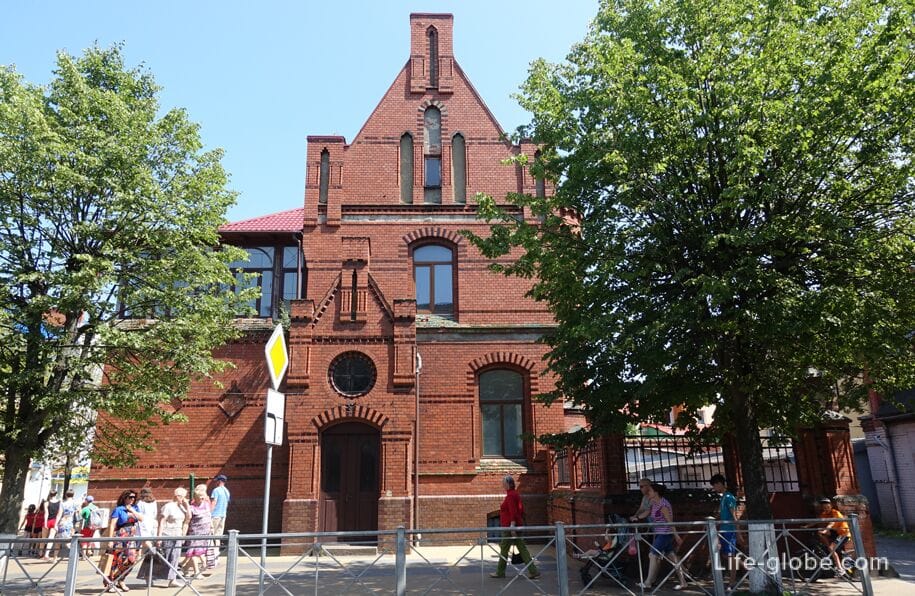
Bas-relief "Map of Zelenogradsk"
Near the main entrance to the post office, on the brick wall, you can see the bas-relief "Map of Zelenogradsk". This bas-relief schematically depicts the main significant places of the city.
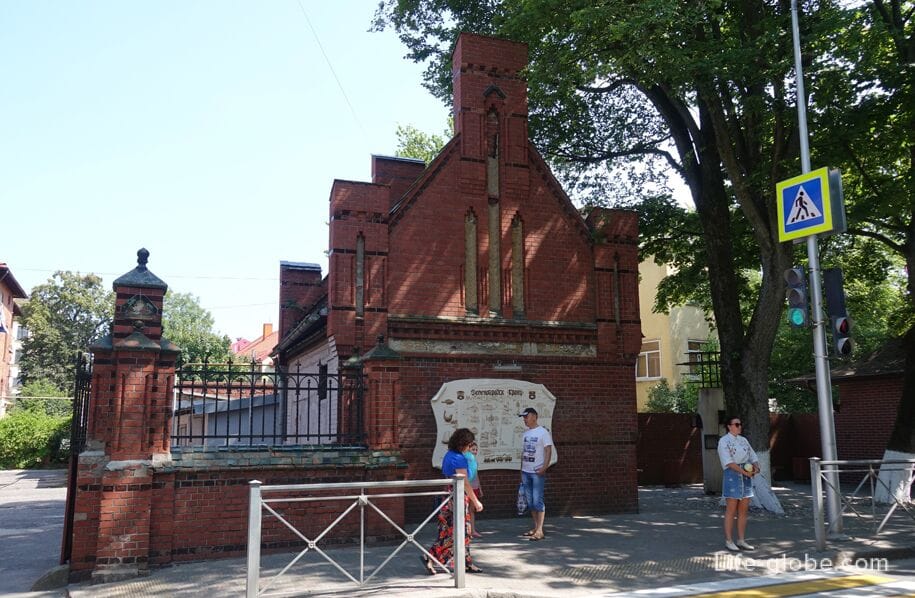
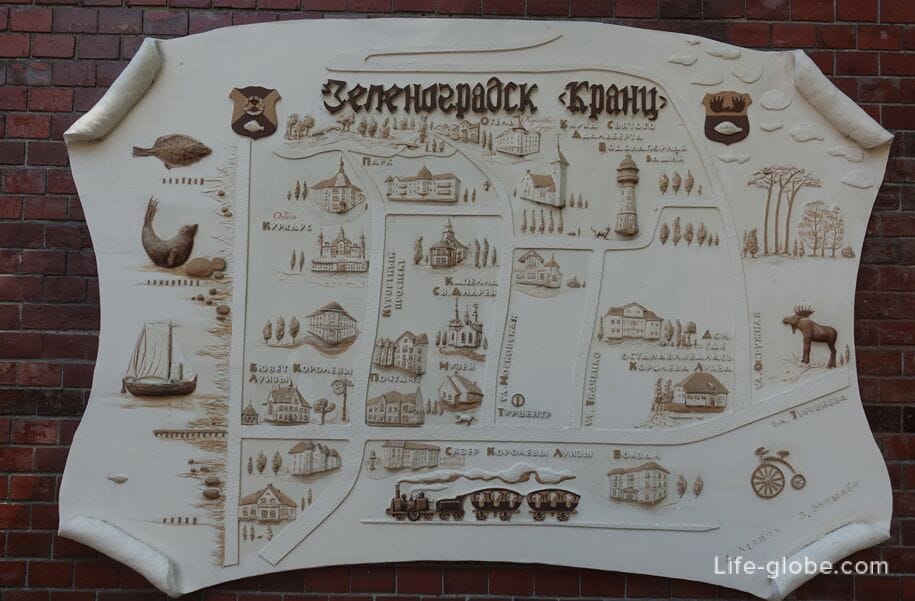
Krantz Water Tower
The Kranets Water tower is the symbol and dominant of the city, and also occupies a special place among the architectural monuments of Zelenogradsk.
The water tower building was built in 1904 to improve the water supply of Krantz.
The water tower is made in an architectural style - historical eclecticism, has a height of almost 40 meters, has a peculiar dome and is the second tallest architectural object of the city.
In the tower, at a height of 24 meters, there is a circular observation deck, and on three floors, below the observation deck, the Murarium cat museum is located. More about the water tower in Zelenogradsk...

St. Adalbert's Church
The Church of St. Adalbert, later the Church of the Transfiguration of the Lord (now the Transfiguration Cathedral) it is made of red brick with a Gothic tower, the height of which is 42 meters.
The building was built according to the project of architect Launir. On November 5, 1897, the church was consecrated as the Lutheran Church of St. Adalbert. In the middle of the altar hung a painting "Christ holds Peter falling", and above it towered a crucifix. In the church there was an organ by the famous master M. Terletsky. Three large bells in the First World War were melted down for the needs of the front, but were soon cast again with donations from the Kranz community and the oberpresident of East Prussia, Adolf von Batocki. Later, the pulpit and three stained-glass windows behind the altar were made at his own expense.
After the Second World War, the building lost its cult purpose - the city gym was located here. In 1994, the building was transferred to the Russian Orthodox Church, the church was consecrated in 2007 by Metropolitan Kirill of Smolensk and Kaliningrad.
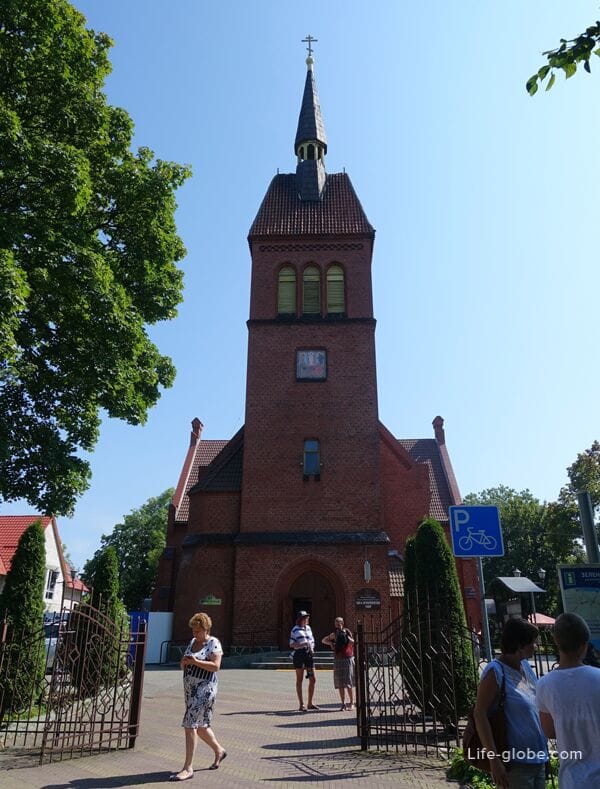
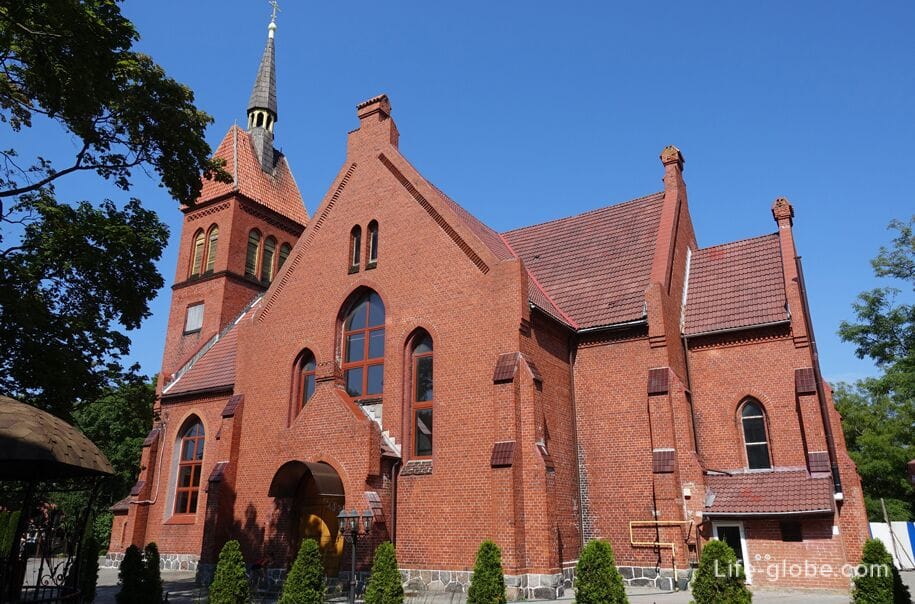

Former Pastor's house
Next to the church of St. Adalbert, just to the east, there is a building that used to be the pastor's house. Currently, the pastor's house is a residential building, in which several families live.
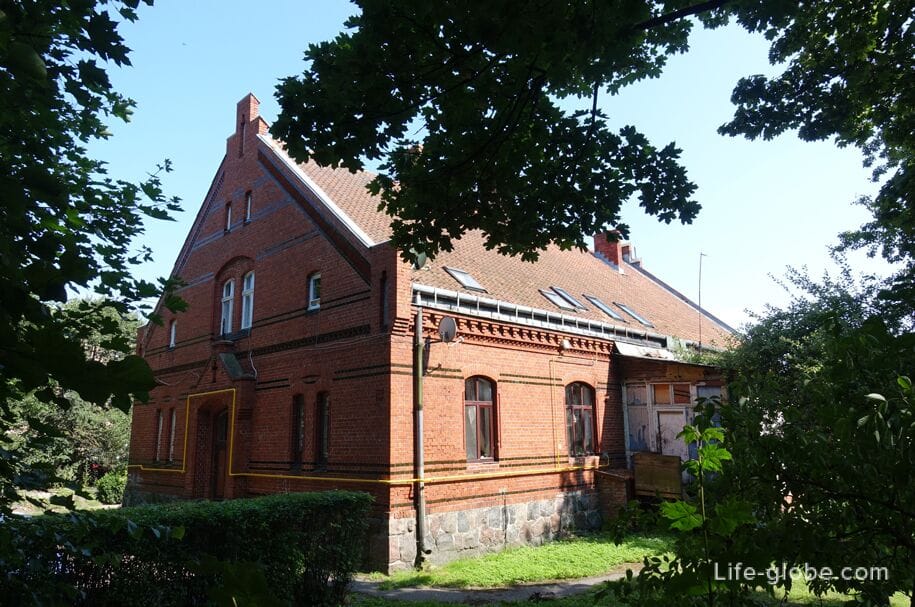
Chapel of St. Andrew
The Chapel of St. Andrew (now the Church of the Apostle Andrew the Primordial) was built in the Neo-Gothic style in 1903-1904. The structure was designed by the Konigsberg carpenter Laufer. The building was consecrated as the Catholic Chapel of St. Andrew. Later, the chapel was acquired by St. Elizabeth's Hospital, located in the city of Konigsberg and equipped with a rest home for children in it.
In Soviet times, a warehouse was located in the chapel, which burned twice. Later, the church was rebuilt according to Orthodox canons. Currently, the Orthodox Church of St. Andrew the First-Called is located in the walls of the building.
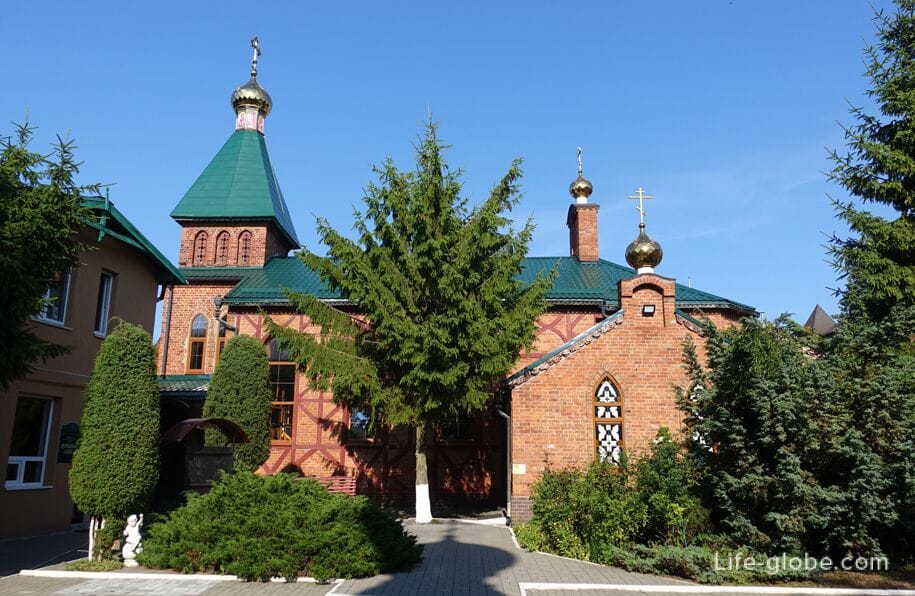
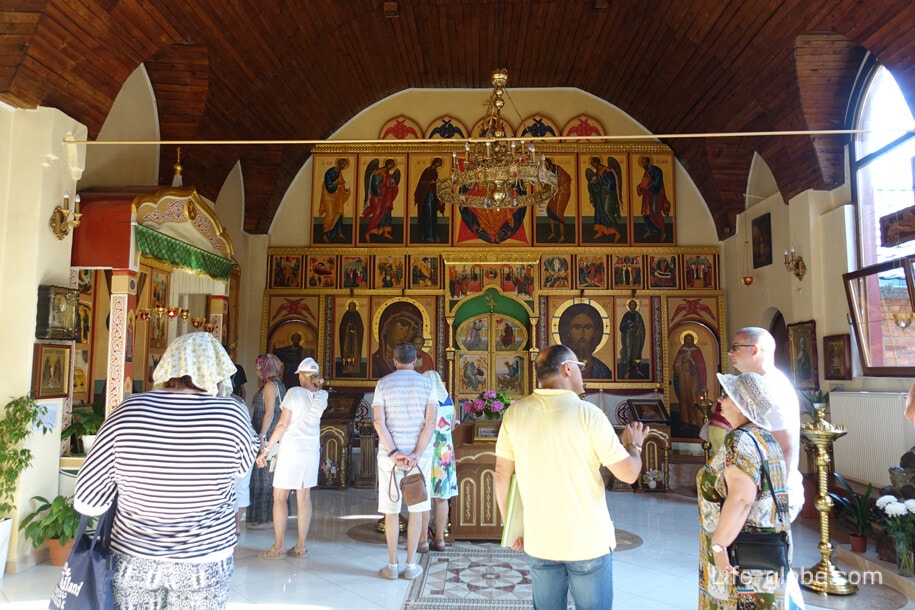
In the church there is a part of the holy relics of the Apostle Andrew the Primordial - a particle of the bone of the thumb of the left foot. And also the particles of the holy relics: the Holy Myrrh-wife Mary Magdalene, the Great Martyr and healer Panteleimon, the saint and Wonderworker Nicholas, etc.
In addition, particles of earth, stones, plants and mantles can be seen in the church.
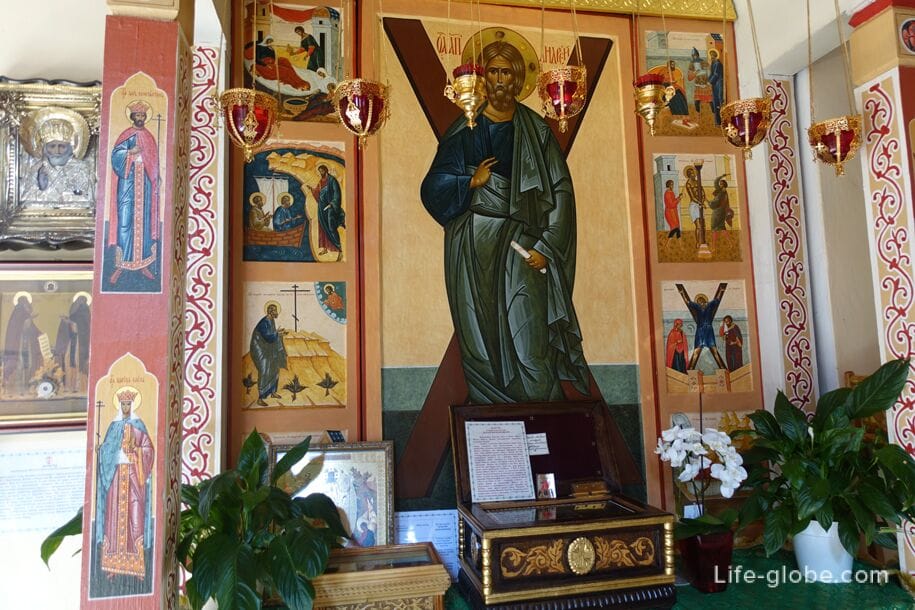
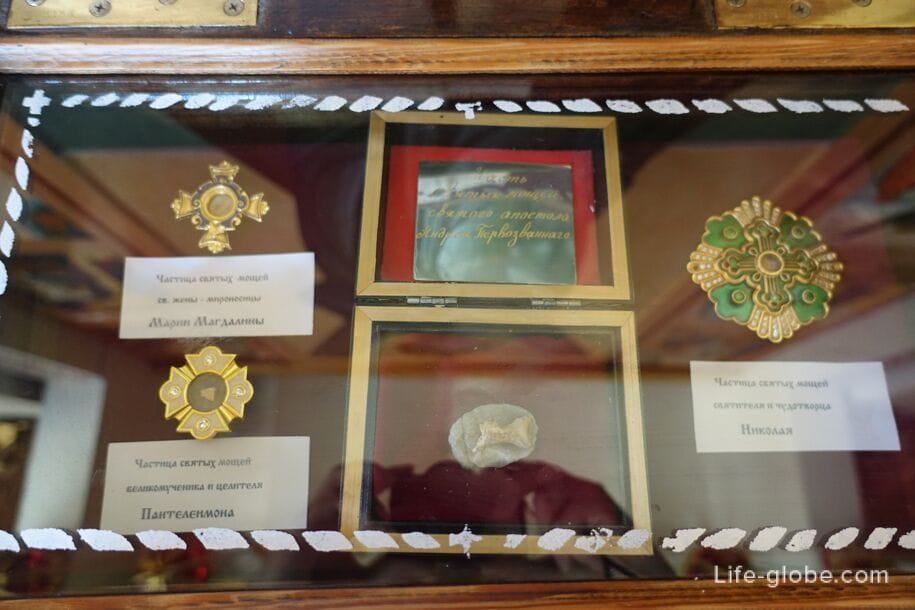
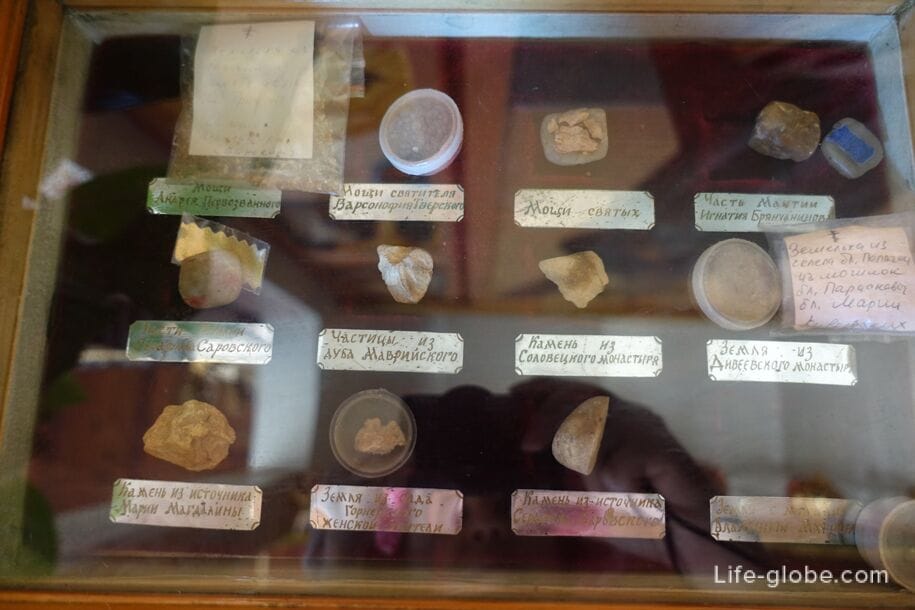
Villa Krell
Villa Krell is an architectural monument of the early 20th century. It got its name from the name of the owner - Max Krell, a notary and lawyer. After retiring from business, Krell and his family moved to Kranz. The villa was built according to an individual project, it combines elements of Gothic and Russian style architecture. The roof of the building is covered with rare glazed tiles. The villa has two entrances - the front one, intended for clients of the notary office and the entrance from the courtyard, which was used for personal purposes.
Since 1947, the building has housed a children's library, and now the Zelenograd City Museum of Local Lore.
The central facade of the building

View from the yard
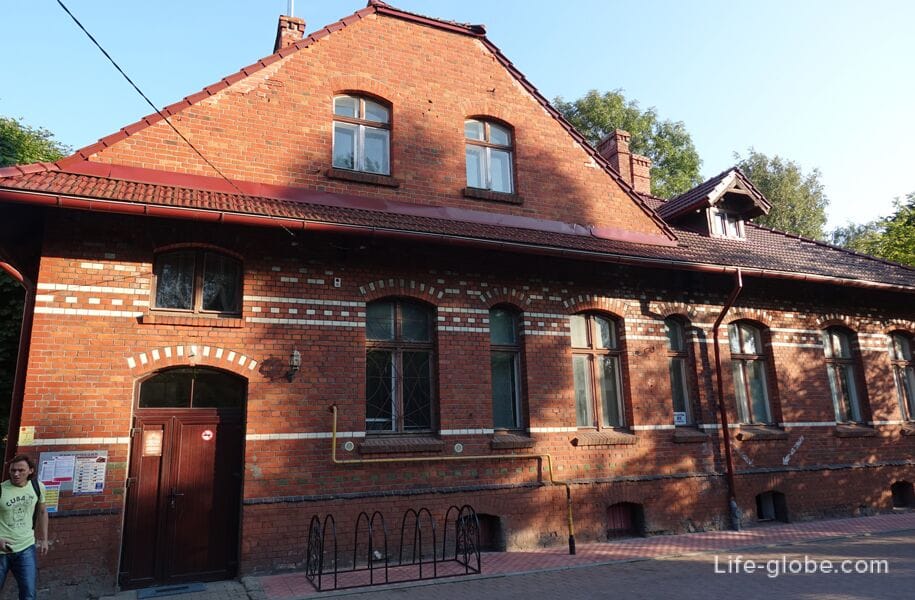
Near the main entrance of the villa there is a part of a sculpture of a man in medieval clothes. Found at the Rudau church (Melnikovo).

And in the courtyard there is a sculpture "Prussian Cat". The image of a fat and proud Prussian Cat was born on the basis of legends and fairy tales of the region and was "visualized" by Kaliningrad sculptor Lyudmila Bogatova in 2005 in honor of the 750th anniversary of Konigsberg-Kaliningrad.
This important fat man remembers a lot - old times and customs, how and by whom the famous Konigsberg Castle was founded, and currently he still keeps the keys to all the city gates of Kaliningrad. Zelenogradsk also has its own "special" line of whiskered descendants of Prussian cats - they are less fat, but also cute and purring))
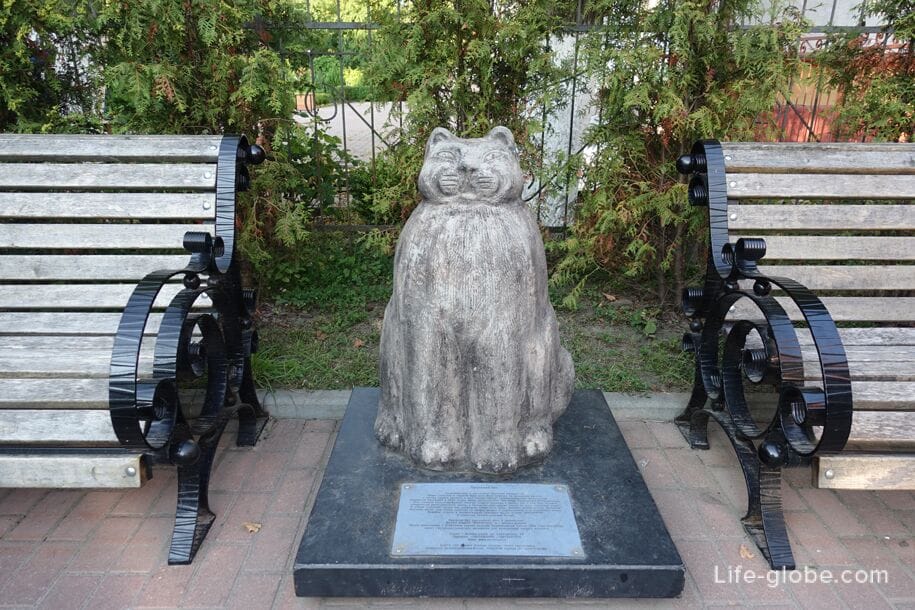
Basta Apartment Building
Villa Krell is adjacent to the Basta House. The Basta House is a former apartment house of F. Basta, built in the early 20th century in the Art Nouveau style (the German current of Art Nouveau was called "Jugendstil"). Previously, the building functioned as an apartment building - furnished rooms were rented to vacationers as hotel rooms. Currently, a kindergarten is located in the building.

Queen Louise Square
In 2010, the square of Queen Louise, the most famous woman of East Prussia, was opened in Zelenogradsk. In the center of the square, on an elegant pedestal, there is a bust of Queen Louise, donated to the city by German partners from the Bad Doberan district. This is a bronze copy of the famous work of the sculptor H.D. Rauch.
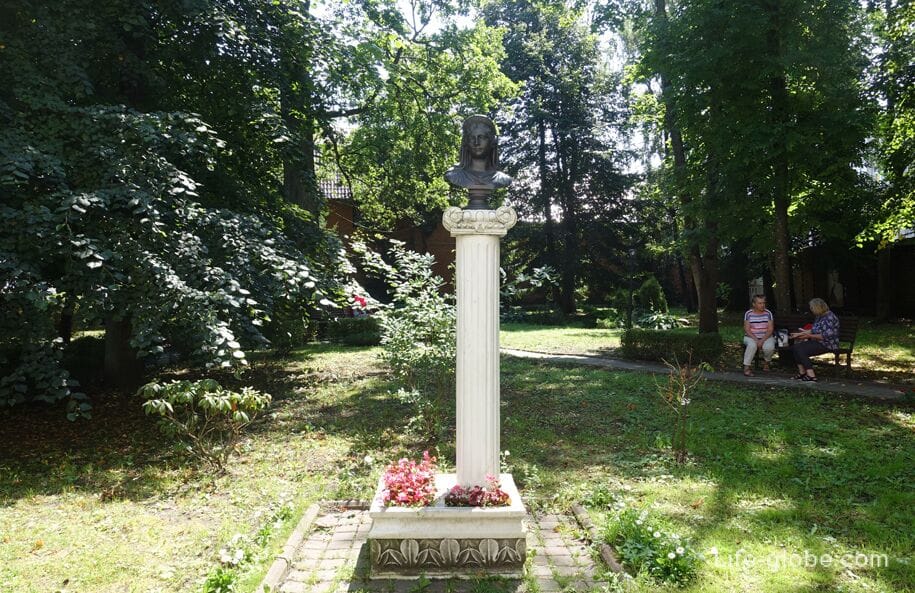
The square is decorated with a white openwork gazebo, which houses the Summer Library of the Muses, where, with the arrival of warm days, visitors can read books (which we have not found).
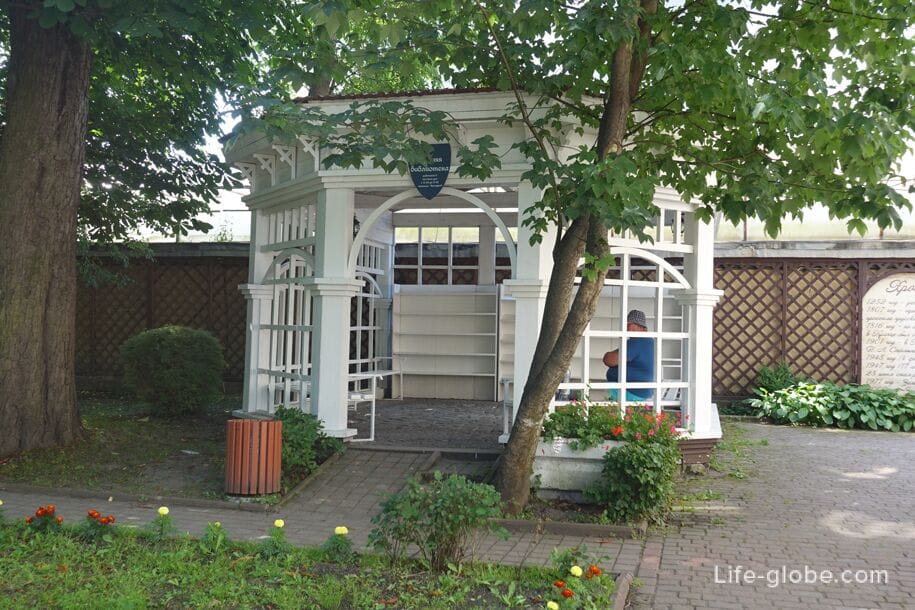
In the center of the square there is a large elm tree (elm, elm), the trunk of which is surrounded by benches. The urban legend says: During a visit to Kranz (1843), King Frederick William IV of Prussia planted a tree in the square in honor of his mother Queen Louise.
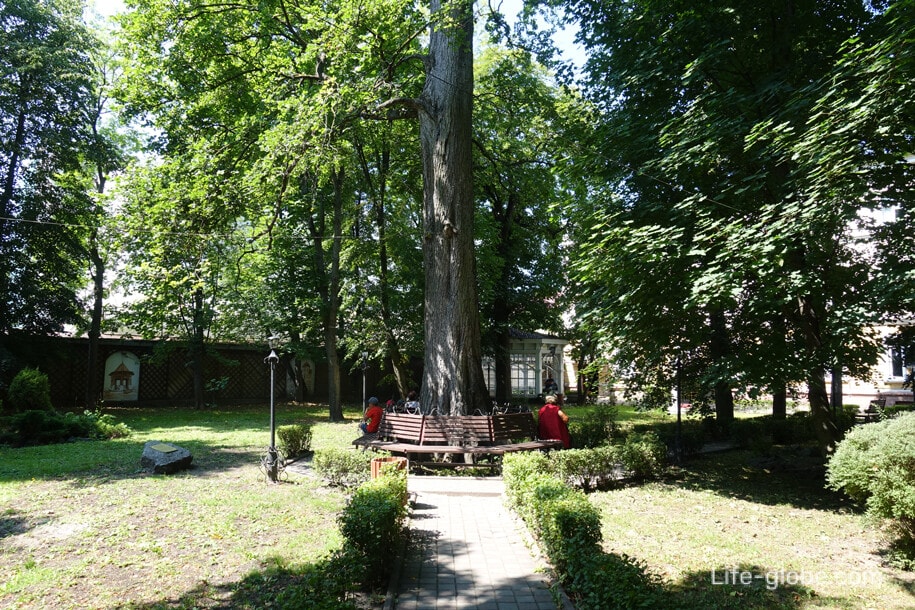
Zelenogradsk City Clock
Next to the post office there is the famous clock of Krantz or the city clock of Zelenogradsk, marking one of the central and pedestrian streets of the city - Kurortny Prospekt.

Kurhaus Krantz
Previously, the status of a Kurhouse was assigned to the main hotel of the resort, where various events were held for guests, and resort life was concentrated.
The date of construction of the building, the full name of which is "The Big Hotel and the New Kurhaus" - 1843. Then the Kurhaus contained a dining room, billiard room, concert, theater and dance halls, as well as 23 hotel rooms. In the spacious reading room under the glass roof, you could look through the latest newspapers. Behind the Kurhaus there was a park with rare species of trees and a summer theater (1859). There was also a summer cafe here. A local a cappella gave concerts in the music pavilion, and a military orchestra performed on Sundays.
Currently, the Kurhaus building is privately owned, it has been restored and functions as a hotel, bar and restaurant.
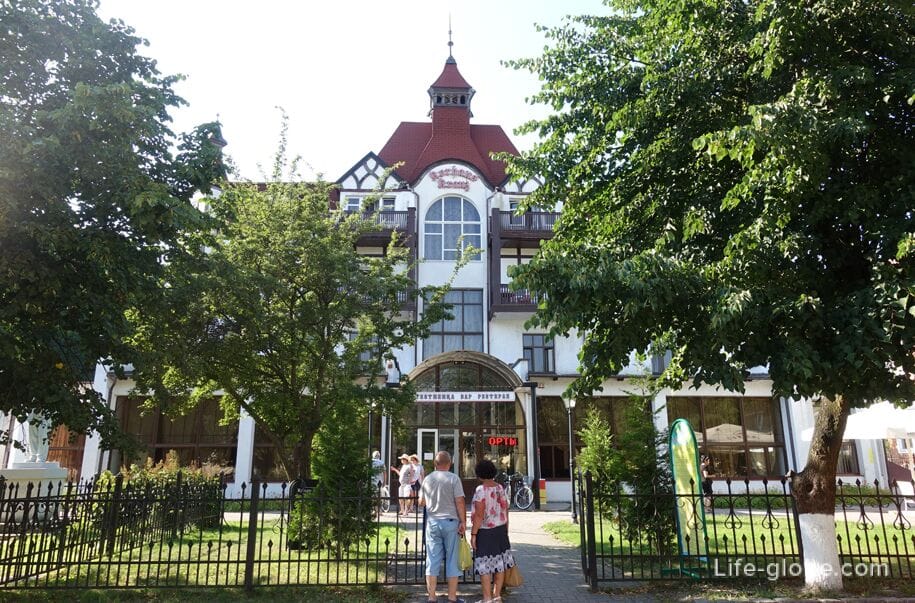
Support for an open power line
Near Kuhaus, on Kurortny Prospekt, there is a metal support for an open power line (Germany, 1920-1930).
Supports of this type have become widespread in Europe. The support was created using the technology of joining metal parts by riveting. Up to the 2nd half of the 20th century, this technology was the main one when creating hulls in machine, ship and bridge construction.
Large manufacturing enterprises were engaged in the production and installation of parts (including for power transmission poles) in Germany, in particular the shipyard "Shikhau" in Konigsberg (now the Baltic shipyard "Yantar" in Kaliningrad).

Monument to Zelenograd cats
The monument to the Zelenograd cats flaunts at the beginning of Kurortny Prospekt. There is a stylized window frame with a sculpture of a cat on the windowsill on the rotary device. At the base of the monument there is a flounder - the symbol of Zelenogradsk.
This composition is made of stainless steel on a cast-iron base, with a mechanism thanks to which the cat rotates around its axis, which allows you to use the composition as a rotating attraction, and on a sunny day, rotate the sculpture so that it is possible to take good photos without darkening and glare.
The monument was made as a sign of the great affection of the residents of the city for tailed friends.
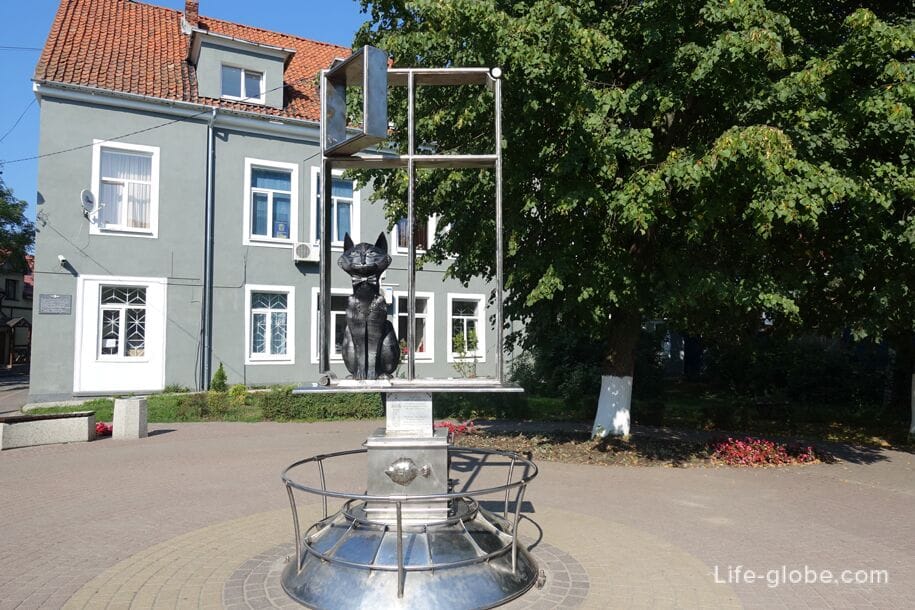
Sculptures and sculptural compositions dedicated to cats, which can be seen here and there throughout the city center, deserve special attention in Zelenogradsk.
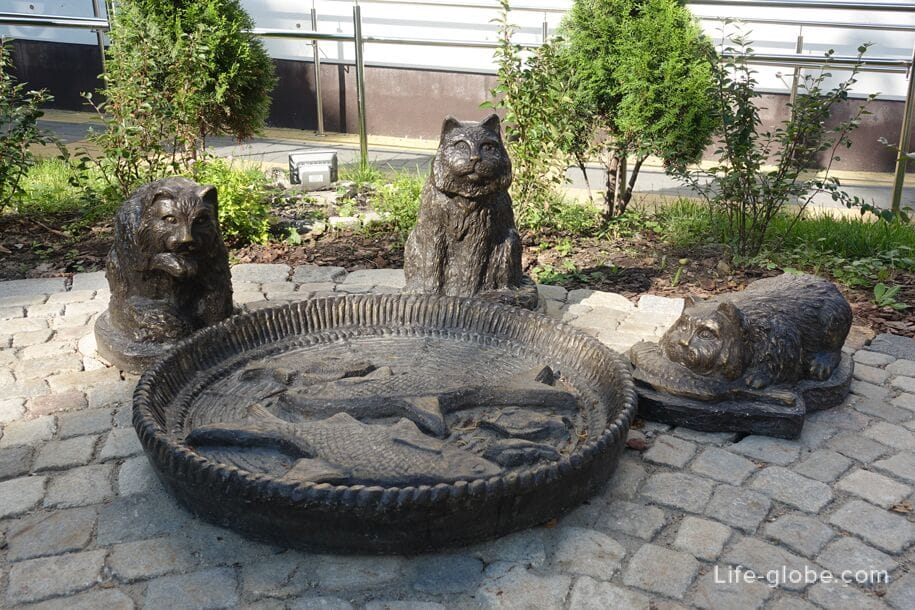

Border post
The border post was installed in Zelenogradsk on June 12, 2017, as a symbol of the state border of the Russian Federation.
The state border of the Russian Federation with the Republic of Lithuania passes through the territory of the Zelenograd District. The pillar in Zelenogradsk is only a symbolic sign that the border is nearby, but the pillar itself is real, it has "served" for decades on the state border.
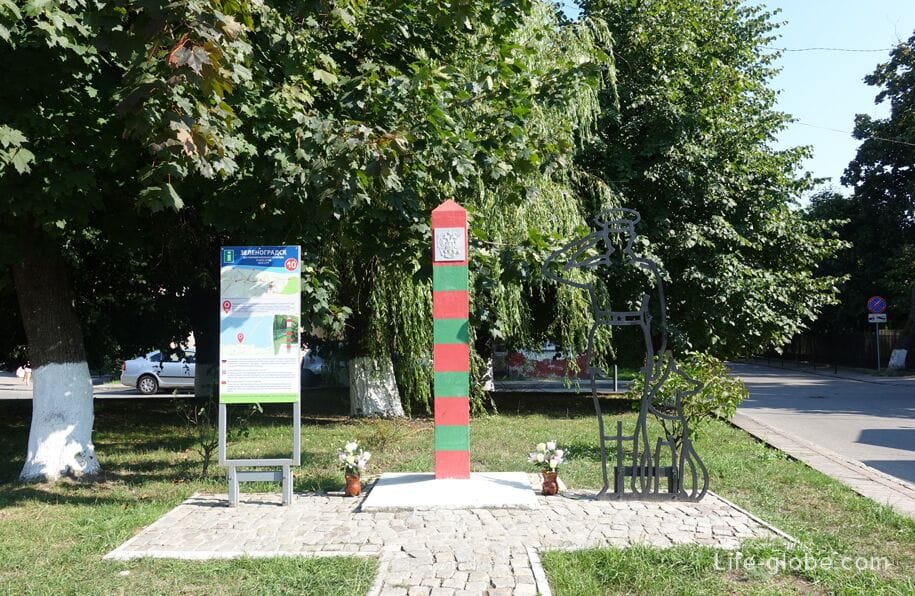
Zelenogradsk City Park
Zelenogradsk City Park (formerly Plantage Park) is a great place for leisurely walks and recreation. And on a hot summer day, this park can become a breath of fresh air, where it is easy to hide from the sun's rays in the shade of the tree crowns.
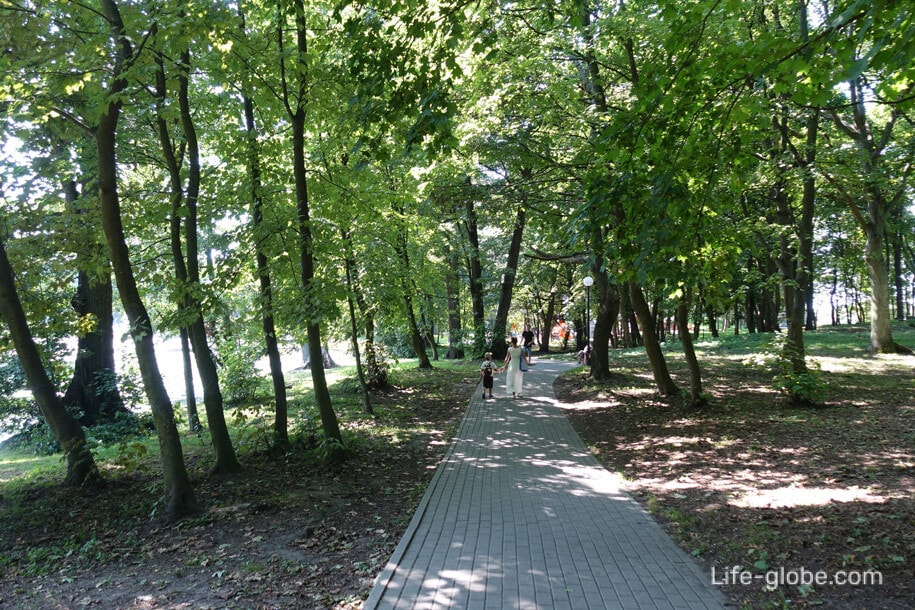
In the park: walking paths, recreation areas, children's and volleyball courts and, the pride of the park - Tortilin pond.
Tortilin Pond is one of the favorite places in Zelenogradsk for walking and recreation. According to some local residents, the most famous turtle from the fairy tale about the adventures of Pinocchio lives in this pond. In the center of the pond is decorated with a fountain.
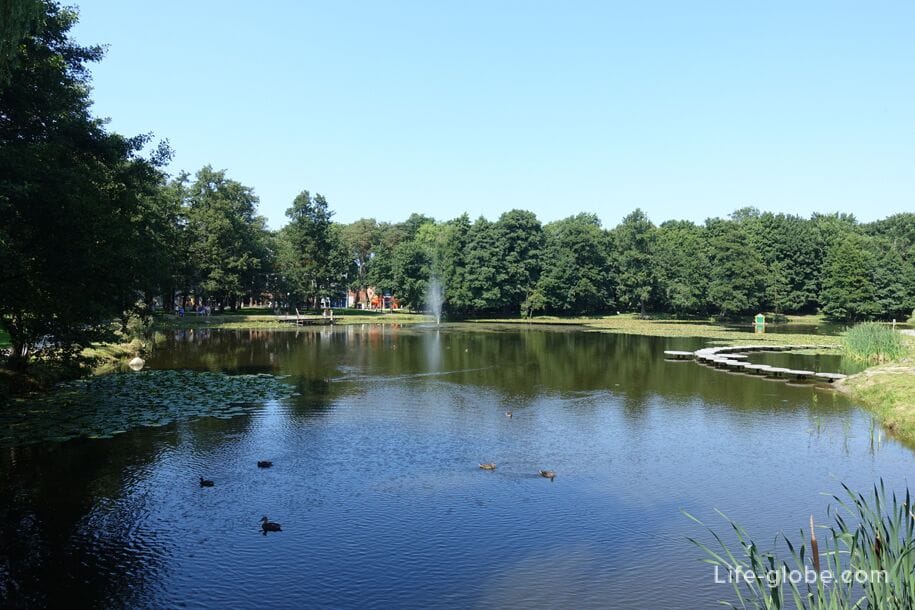
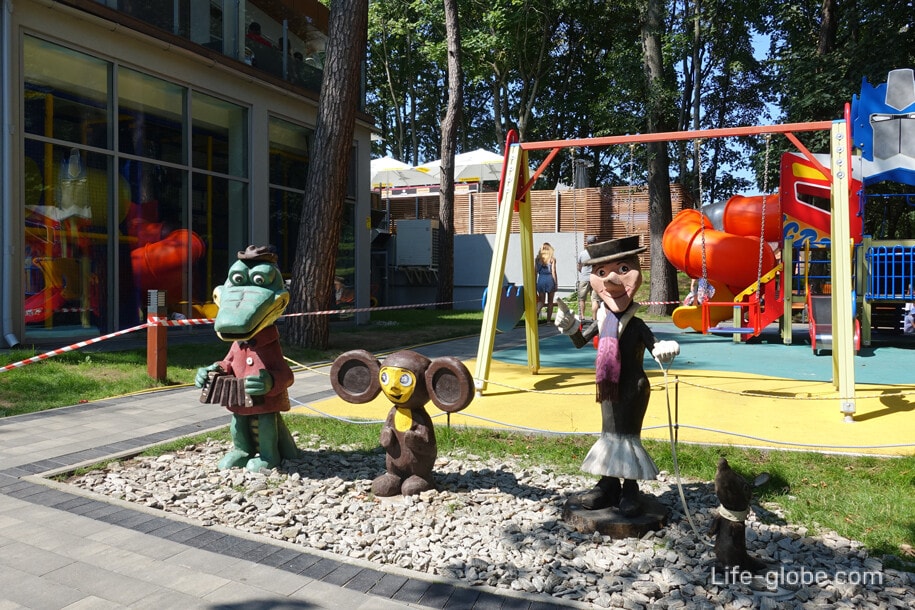
The park pond consists of a large and a small pond, which are separated by a humpback bridge. This bridge has a romantic name - "Bridge of sighs". Previously, Tortilin Pond was called "Stork Pond" (German name Storchenteich), since there was a sculpture of a stork in the center of the small pond.
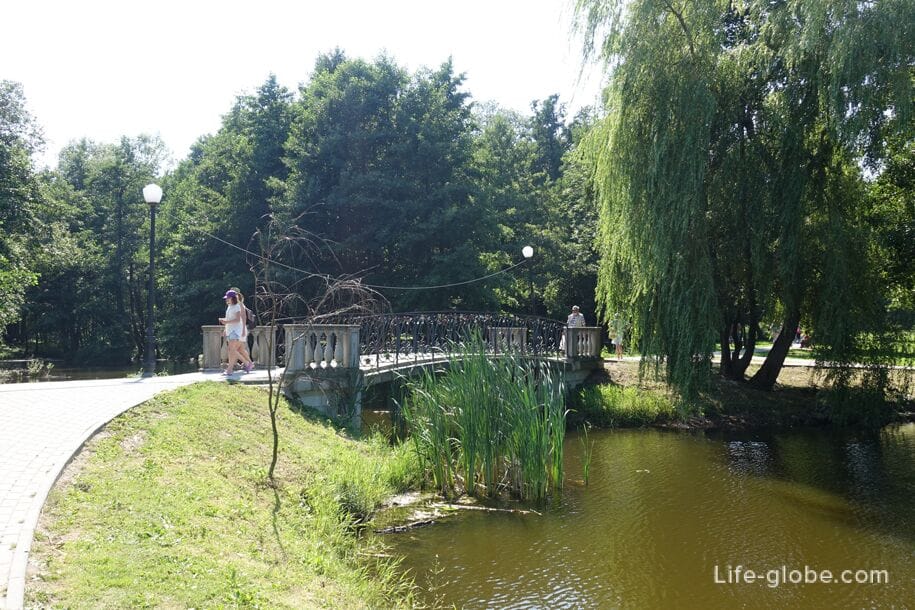
Attractions of the park:
- wooden gates decorating the central entrance to the park;
- monument to the poet Adam Mickiewicz, who rested in Krantz in October 1824;
- a natural attraction is the Imperial oak, planted in 1872 in honor of Wilhelm I, proclaimed German Emperor on January 18, 1871;
- Memorial to the Fallen Wars, opened in 1950. 813 soldiers of the Guards army, 5, 39 and 43 armies who fell in January - April 1945 are buried in this place;
- a memorial stone to Sam Simkin. More about Zelenograd Park...
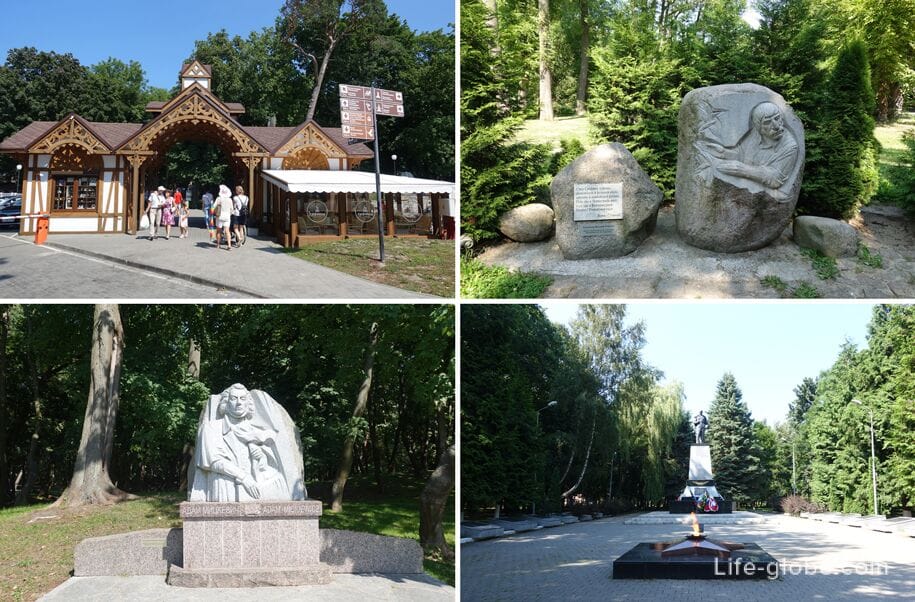
The building of the Queen Louise Hotel
Today it is the only hotel in the city that bears its historical name - the Queen Louise Hotel. The building was built in the 1930s and named after the Queen of East Prussia. In January 1807, the most famous woman of East Prussia, fleeing from Napoleon's troops to Memel, spent the first night after leaving Konigsberg in Krantz.
Streets, a church, a bridge and even a fort were named after the people's favorite in Prussia, and a hotel in Krantz. In Soviet times, the building first belonged to the military department, and in the late 1960s there was a hotel and restaurant "Tourist". In the 1990s, the new owner V.A. Westerlund returned (partially) the pre-war appearance and the former name to the building.
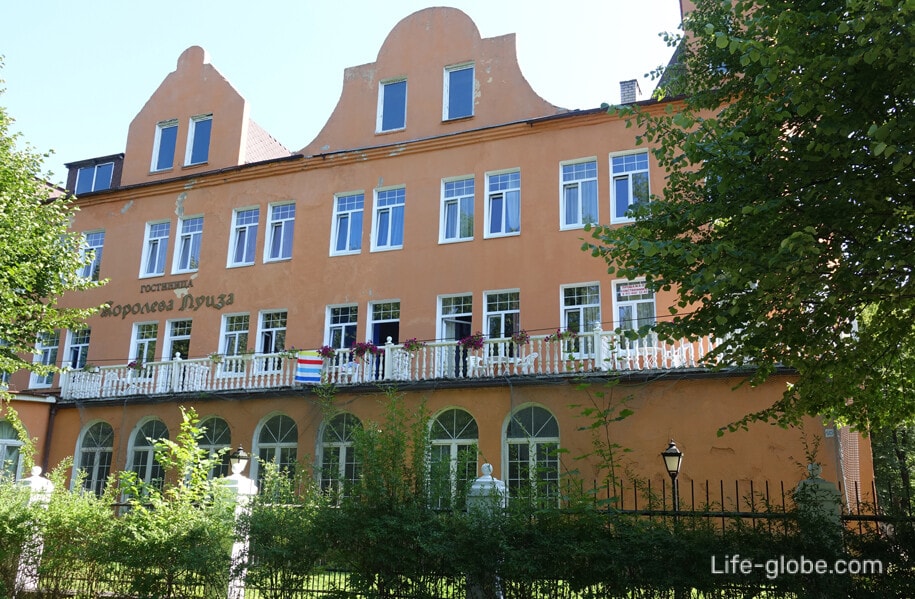
The building of the hotel "East Prussia"
The exact date of construction of the building, preserved on the facade, is 1906. The architectural style is modern. In the upper part of the building - half-timbered. There are many decorative elements on the building: mascaron (fisherman's head), wrought-iron balconies, floral stucco pattern.
In 1915, the building in which the hotel "Just" was located burned, but soon it was restored, and the hotel received a new name - "East Prussia". In April-July 1945, a military hospital for Soviet soldiers participating in the Zemland operation was stationed in the building. The head of the hospital at that time was a German surgeon, Dr. Riedel. Later, a district hospital was located here, and since 1986 - a district polyclinic.

Railway station
The building was built in 1885, when the grand opening of the railway line connecting Konigsberg and Kranz took place. The main branch was 28.3 km long . Later, two additional branches were opened: to Neukuren and Kranzbeek (a steamboat berth on the canal). The road was served by locomotives with cars of I, II and III classes. On summer Sundays and holidays, 16 train trains were involved on the line. On Sundays, the main schedule was strengthened by the introduction of "bathing" trains that ran non-stop.
To date, the station building has hardly changed and still functions as a railway station, only now - Zelenogradsk. There was only a turning circle left, on which the driver used a hand lever to turn the locomotive around.
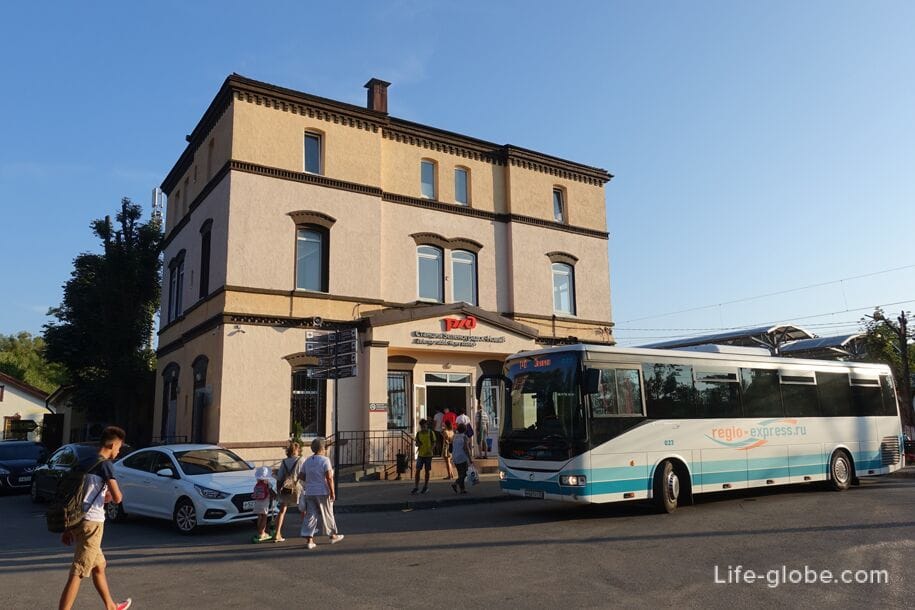
In addition to the listed buildings, other significant buildings have also been preserved in Zelenogradsk, for example, the building of the Baltic Sea Hotel, built in 1885 in neoclassical style and once considered the most fashionable hotel in Kranets. Currently, the Zelenograd District Department of Education is located on the 1st floor of the building, and the city library is located on the 2nd floor.
There are also architectural monuments on Kurortny Prospekt, some of which have been restored. Learn more about the Resort Avenue in Zelenogradsk...
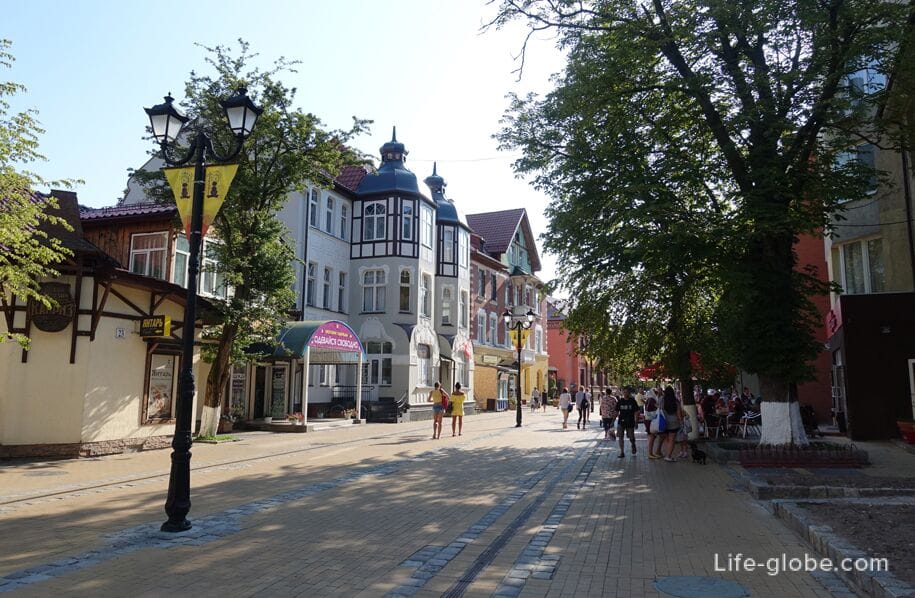
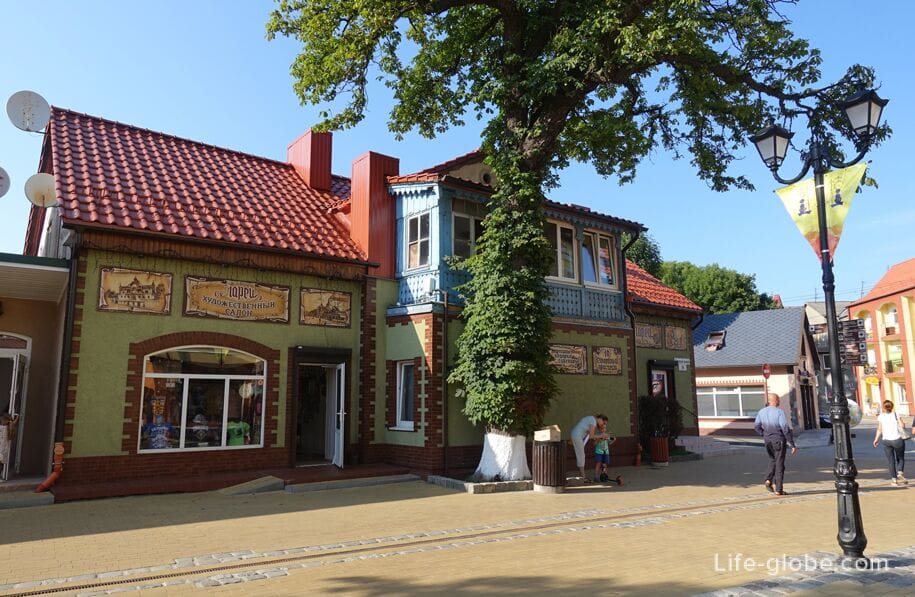
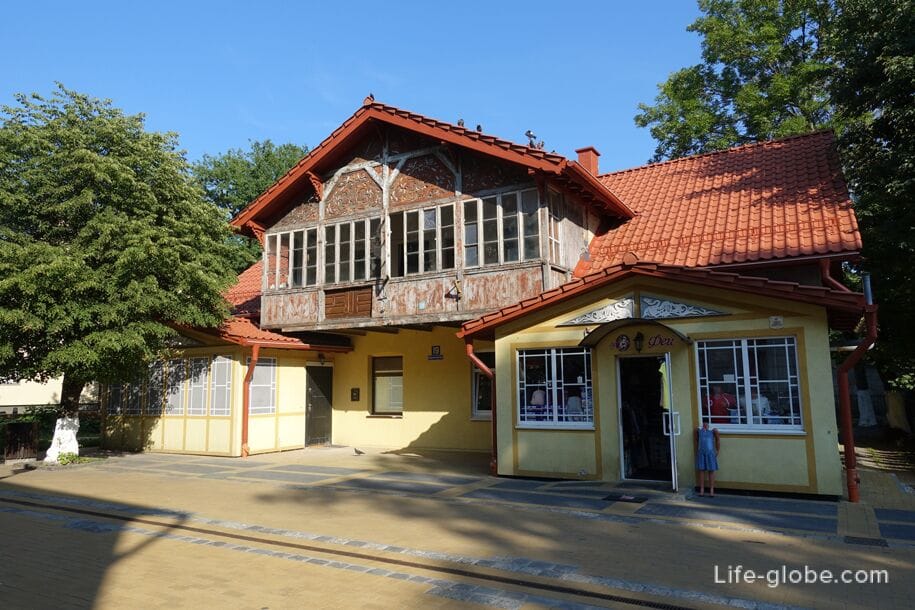
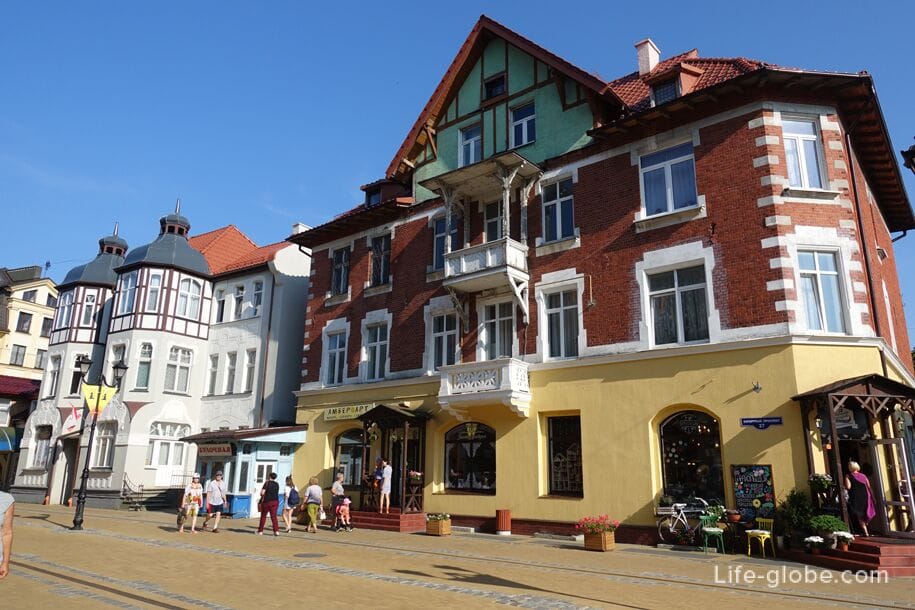
What to see near Zelenogradsk
Curonian Spit is a national park with unique natural complexes: sand dunes, dancing forest, royal forest, lake "Swan", etc.
In 2000, the Curonian Spit was included in the UNESCO World Heritage List.
You can visit the Curonian Spit with one of the excursions, as well as independently, by car, taxi, bicycle or by bus to one of the villages: Lesnoy, Rybachy, Morskoe.
The length of the Curonian Spit is about 48 kilometers, the main and most interesting places of interest are located at a sufficient distance from the villages, so a bus ride is not the most suitable option for visiting the Curonian Spit.
It is more convenient to visit the Curonian Coma by car (car rental in Kaliningrad), bicycle or with one of the excursions:
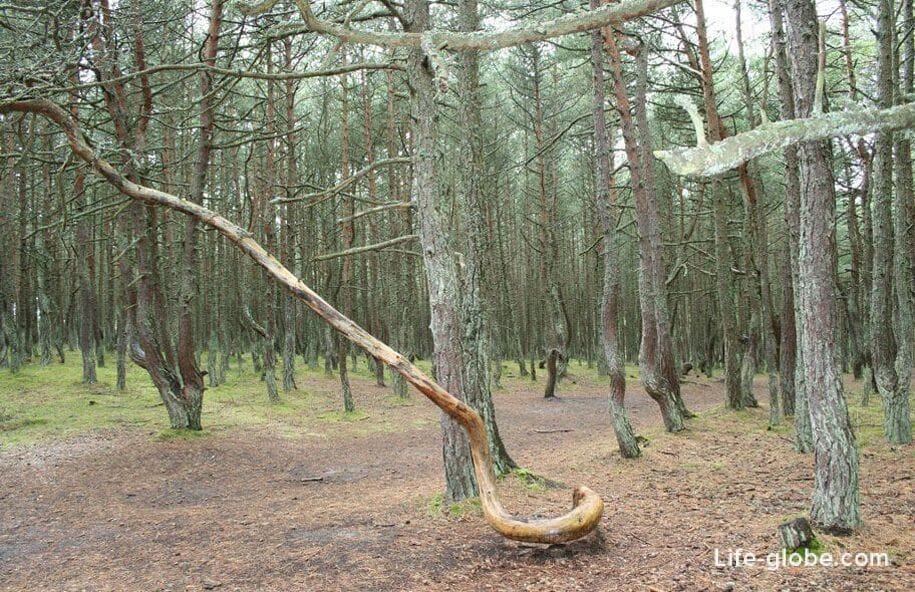
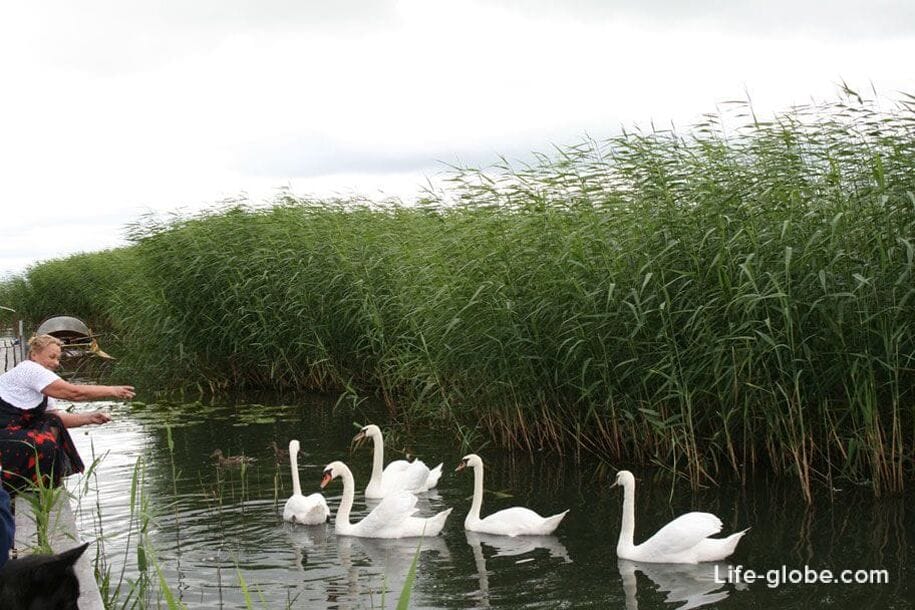
Svetlogorsk is the largest and most developed resort city in the Kaliningrad region.
You can get from Zelenogradsk to Svetlogorsk by taxi, public buses or trains.
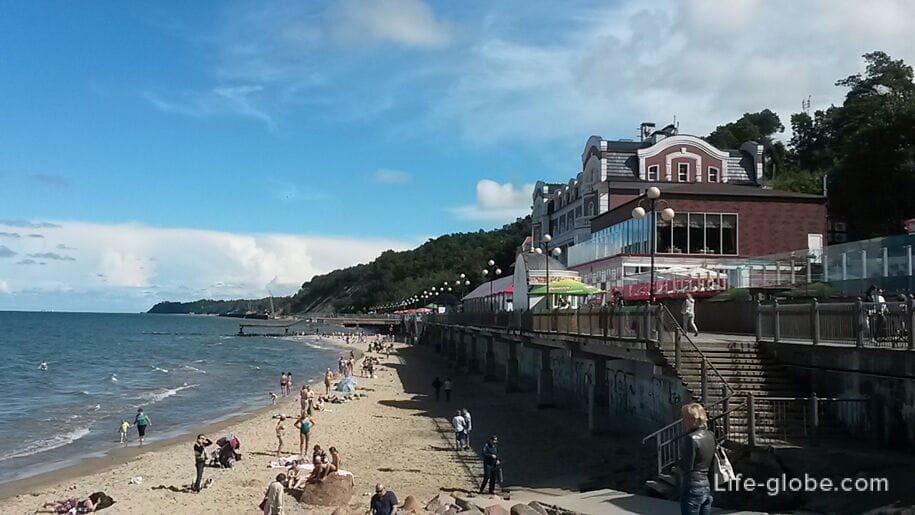

Kaliningrad is the administrative center of the Kaliningrad Region and the westernmost regional center of the country.
You can get from Zelenogradsk to Kaliningrad by taxi, public buses or commuter trains.
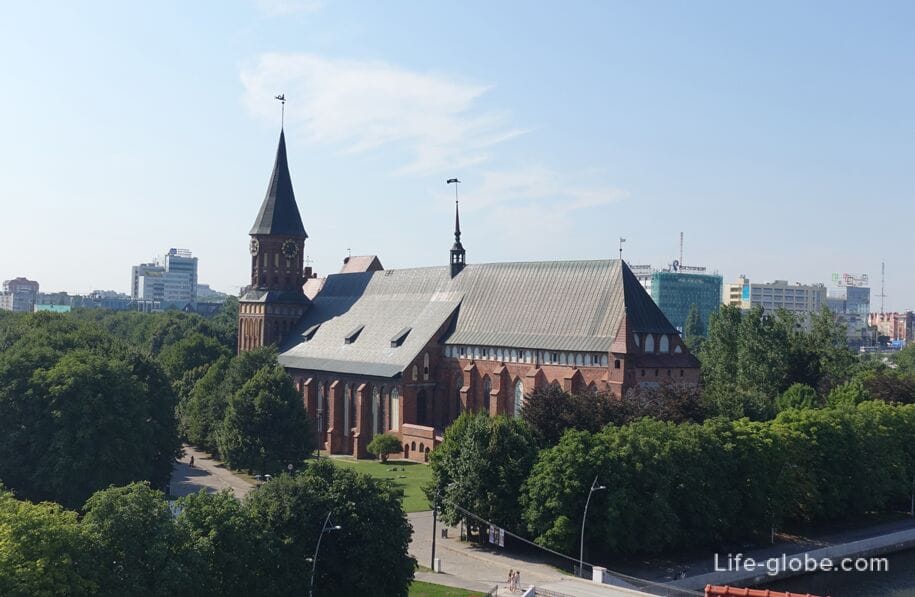
All accommodation facilities in Zelenogradsk (hotels, apartments, guest houses, etc.), including near beaches, in the city center and more remotely from those, can be viewed and booked here




